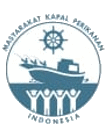PEMETAAN EKOSISTEM PADANG LAMUN BERESOLUSI TINGGI DENGAN METODE CLOSE RANGE PHOTOGRAMMETRY
Abstract
Several remote sensing methods using satellite imagery and acoustic instruments have often been used in mapping aquatic ecosystems but expensive and need hight expertise. This method used in this study is quite new in mapping aquatic ecosystems, but has often been done in mapping terrestrial areas. This method produces clear high-resolution digital data using optical devices with high efficiency. This research was carried out in Pulau Matahari, Kepualauan Banyak, Aceh Singkil for 3 (three) months in the field and 2 (two) months of data processing. This research data is in situ primary data taken by taking optical images continuously from the surface of the water by swimmer using a waterproof digital camera and then processed with PhotoScan software. The results of this study are high-resolution digital image data that can be used to make seagrass ecosystems map at the study site, assess ecosystem status, identify seagrass species ( 4 species), density (St1:103,9 ind/m2 and St2:128 ind/m2) and seagrass cover (57%– 61%).
Full Text:
PDFReferences
Brower, J.E., J.H. Zar, and C.N. Von Ende. 1990. Field and Laboratory Methods for General Ecology. Wim. C. Brown Co. Pub.Dubuque. Iowa. 237 pp.
de la Torre-Castro, M., Di Carlo, G., Jiddawi, N., 2014. Seagrass importance for a smallscale fishery in the tropics: the need for seascape management. Mar. Pollut. Bull. 83 (398–347).
Figueira, W., Ferrari, R., Weatherby, E., Porter, A., Hawes, S., & Byrne, M. (2015). Accuracy and precision of habitat structural complexity metrics derived from underwater photogrammetry. Remote Sensing, 7, 16883–16900.
Grech, A., Chartrand-Miller, K., Erftemeijer, P., Fonseca, M., McKenzie, L., Rasheed, M., et al., 2012. A comparison of threats, vulnerabilities and management approaches in global seagrass bioregions. Environ. Res. Lett. 7, 024006.
Hernawan, U.E., Nurul, D., Sjafrie, M., Indarto, H., Supriyandi., Suyarso., Iswari, M.Y., Anggraini, K., Rahmat., 2017. Status Padang Lamun Indonesia. Pusat Penelitian Oseonografi. LIPI. Jakarta. 37 hlm.
Jackson, E.L., Rowden, A.A., Attrill, M.J., Bossey, S., Jones, M., 2001. The importance of seagrass beds as a habitat for fishery species. Oceanogr. Mar. Biol. 39, 269–304.
Komatsu T, Sagawa T, Sawayama S, Tanoue H, Mohri A, Sakanishi Y (2012) Mapping is a key for sustainable development of coastal waters: examples of seagrass beds and aquaculture facilities in Japan with use of ALOS images. In: Ghenai C (ed) Sustainable development. Intech Publishing Co, Rijeka, Croatia, pp 145–160
Newmaster, A.F., K.J. Berg, S. Ragupathy, M. Palanisamy, K. Sambandan, and S.G. Newmaster. (2011). Local knowladge and conservation of seagrass in the Tamil Nadu State of India. J. of Ethnobiology and Ethnomedicine. 37p.
Ruíz, J. M., Boudouresque, C. F., & Enríquez, S. (2009). Mediterranean seagrasses. Botanica Marina, 52(5), 369-381.
DOI: https://doi.org/10.35308/jpt.v6i2.2182
Refbacks
- There are currently no refbacks.
Copyright (c) 2020 JURNAL PERIKANAN TROPIS
Jurnal Perikanan Tropis (print ISSN 2355-5564 ;online ISSN 2355-5572), is published by the Faculty of Fisheries and Marine Science Universitas Teuku Umar, Indonesia .

This work is licensed under a Creative Commons Attribution-NonCommercial-ShareAlike 4.0 International License










